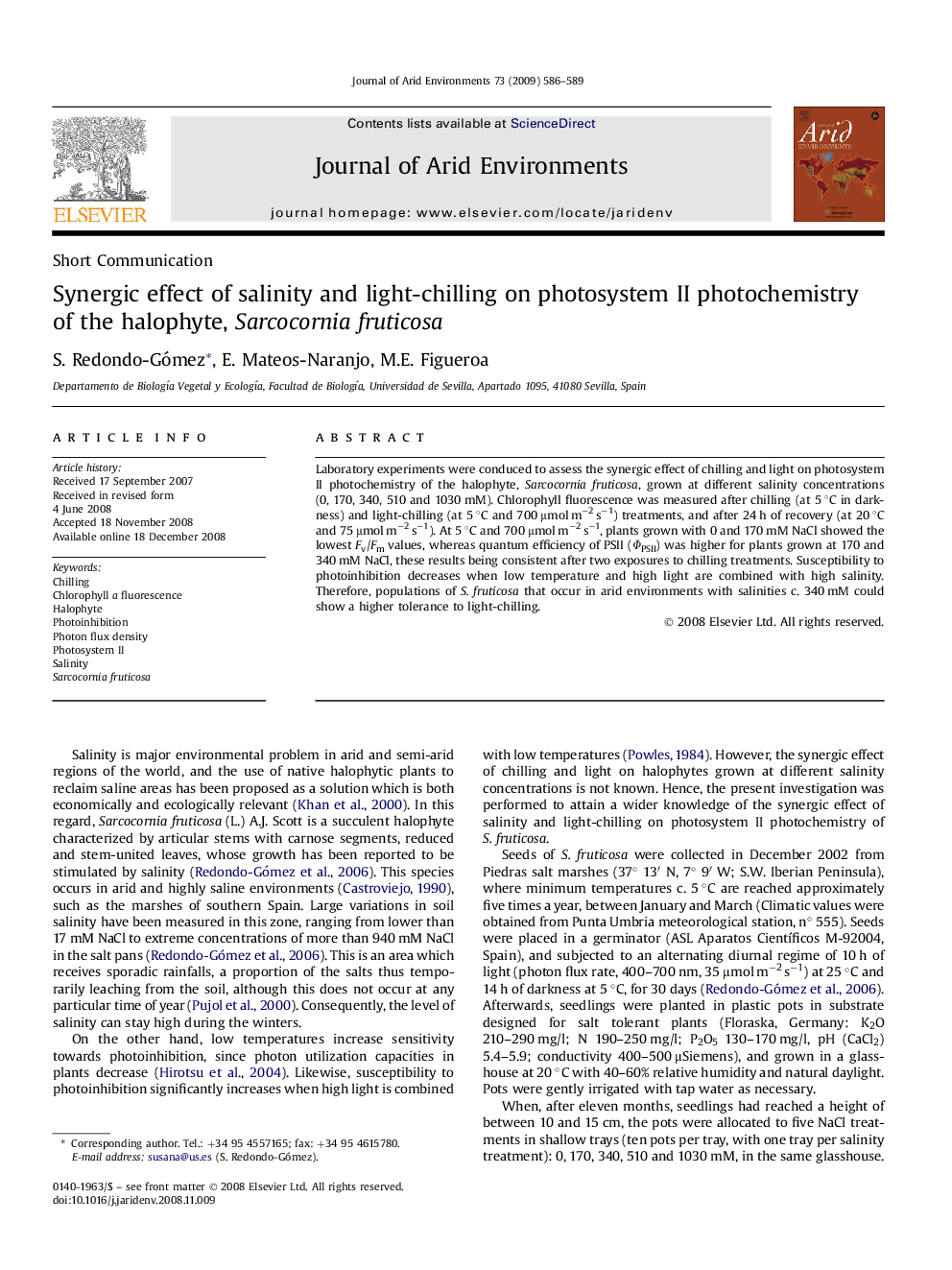| Article ID | Journal | Published Year | Pages | File Type |
|---|---|---|---|---|
| 4393970 | Journal of Arid Environments | 2009 | 4 Pages |
Laboratory experiments were conduced to assess the synergic effect of chilling and light on photosystem II photochemistry of the halophyte, Sarcocornia fruticosa, grown at different salinity concentrations (0, 170, 340, 510 and 1030 mM). Chlorophyll fluorescence was measured after chilling (at 5 °C in darkness) and light-chilling (at 5 °C and 700 μmol m−2 s−1) treatments, and after 24 h of recovery (at 20 °C and 75 μmol m−2 s−1). At 5 °C and 700 μmol m−2 s−1, plants grown with 0 and 170 mM NaCl showed the lowest Fv/Fm values, whereas quantum efficiency of PSII (ΦPSII) was higher for plants grown at 170 and 340 mM NaCl, these results being consistent after two exposures to chilling treatments. Susceptibility to photoinhibition decreases when low temperature and high light are combined with high salinity. Therefore, populations of S. fruticosa that occur in arid environments with salinities c. 340 mM could show a higher tolerance to light-chilling.
